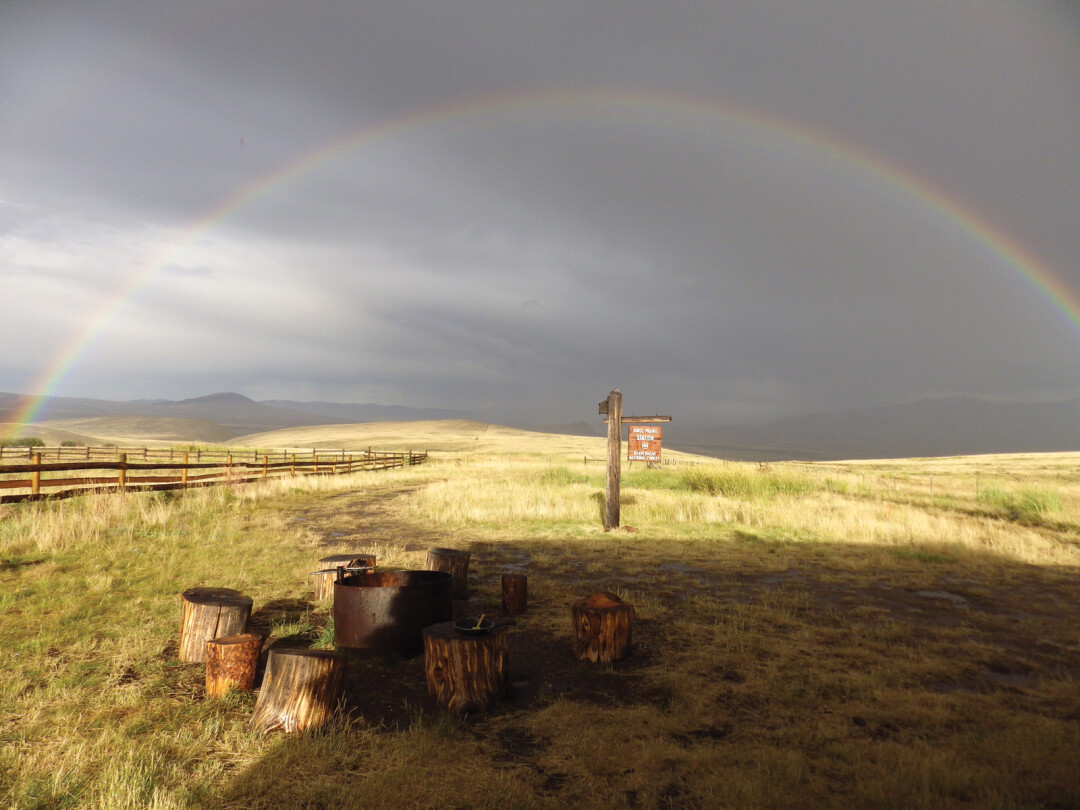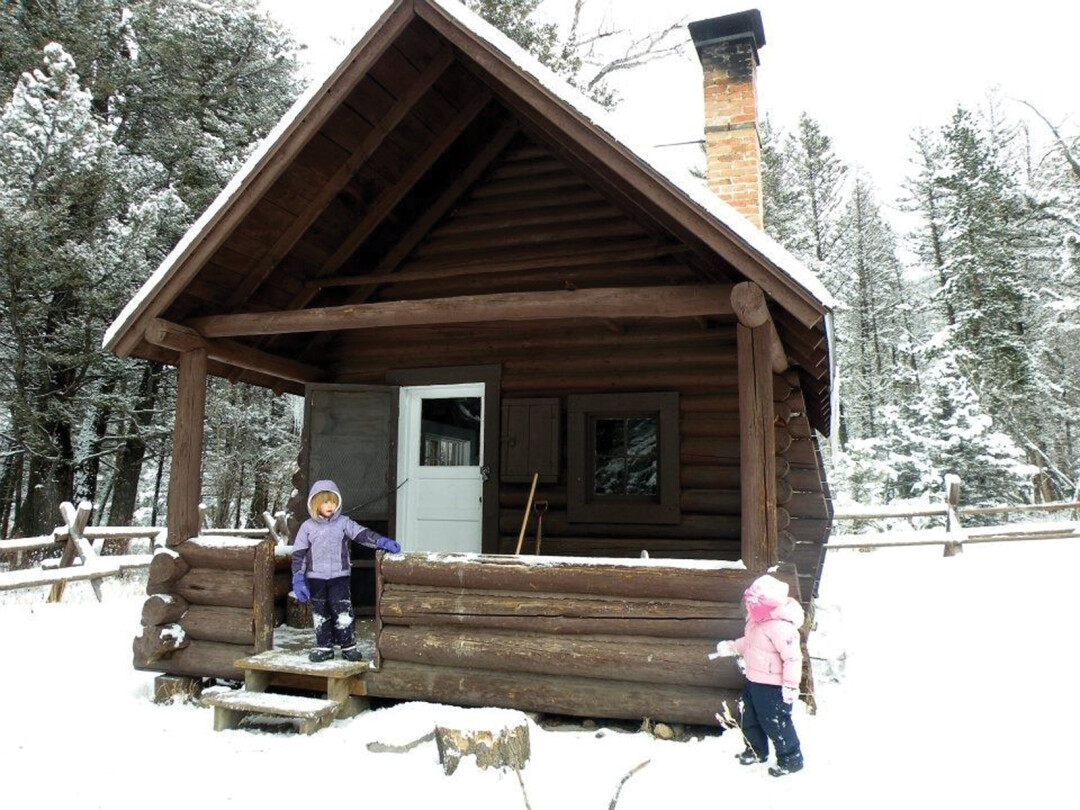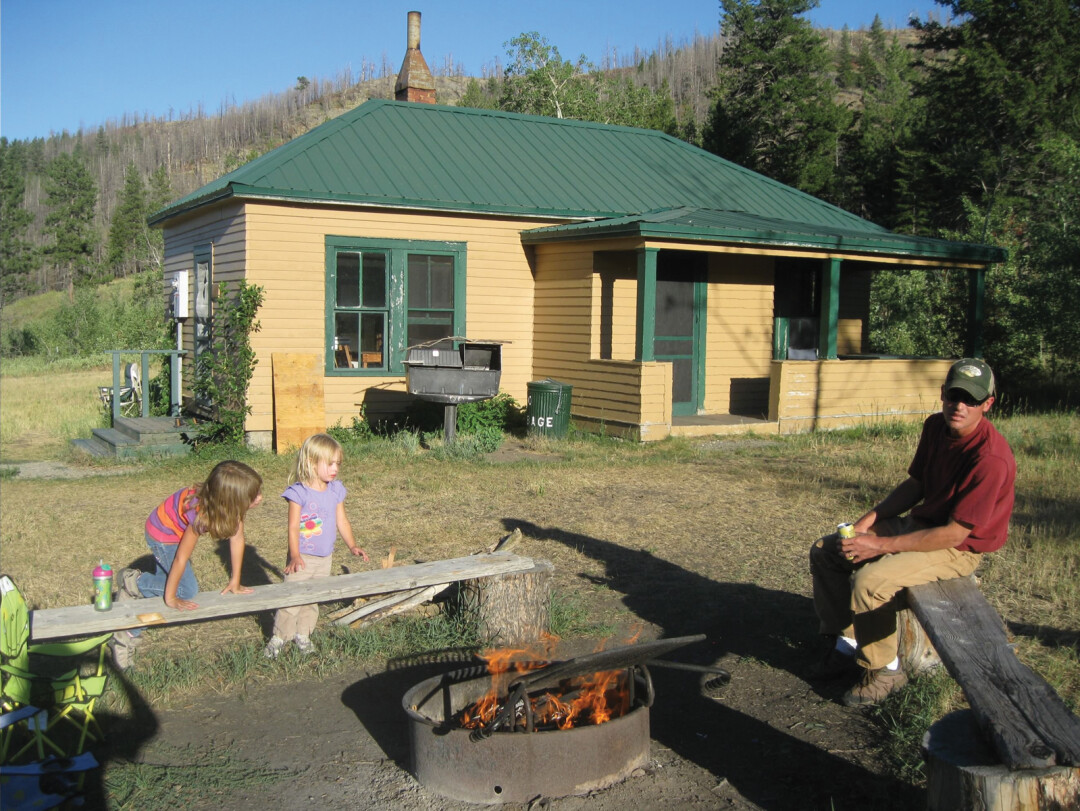Camp With A Roof Over Your Head
National Forest Service Cabins Offer A Great Way To Enjoy The Backcountry Without Packing A Tent

When my family sits on the front porch of the Horse Prairie Ranger Station (a place we try to visit twice a year), it feels as though we are the only people in the world. The landscape seems untouched as far as the eye can see. At night, in that deep, Montana darkness, only four lights twinkle on the horizon giving just a hint that we aren’t the only people out there. Such peace and quiet invites all kinds of animals to the area; we’ve seen a bear, badger, fox, countless elk, and even a baby pronghorn antelope frolicking through the fields under the watchful eyes of its parents. We were surprised one evening by a pair of owls, circling low above the cabin. We stared in awe until we realized they were sizing up our Corgi. Then, we decided to retire inside where soup bubbled on the propane stove. We spread our sleeping bags out on the cots and built a fire in the wood-burning stove. This is my kind of camping.
The Horse Prairie Ranger Station is just one of many cabins in southwest Montana that is maintained by the U.S. Forest Service. These tiny cabins are rustic. They lack the luxury of many campers, but are leagues more comfortable than sleeping in a tent. They make exploring the backcountry, really getting away from it all, so easy.
The Horse Prairie cabin, outside of Dillon, is one of my favorites. We always stop for a bite to eat at Sparky’s Garage Restaurant in town, and then head to the wilderness for as many days as we can afford. We hike and explore, roast marshmallows over the fire, and watch the natural world go by. It takes a couple of hours to drive to this cabin from Bozeman, but it is worth the trip. If you want to stay closer to home, there are several fantastic Forest Service cabins in Bozeman’s backyard.

Spanish Creek Cabin
You can drive right up to the Spanish Creek Cabin during the summer, which makes packing for several days in the backcountry a cinch. It is a great spot to bring kids—they will enjoy the creek that runs beside the cabin and the fire pit that is essential for making s’mores. Playing cards by the light of the wood-fired stove is a sure way to build lasting memories. The cabin sits at the base of the Lee Metcalf Wilderness, near the Spanish Creek Trailhead, which connects to an entire network of trails. To get there, take Highway 191 into the Gallatin Canyon and turn right on Spanish Creek Road.
Garnet Mountain Fire Lookout
If you want to feel as though you are on top of the world, the Garnet Mountain Fire Lookout is worth the hike. Living quarters are on the second story and encased in windows, so you are surrounded by incredible views of the Spanish Peaks, Gallatin Range, and Hyalite Ridge. With all the windows, you will feel as if you are sleeping under the stars, even though you are snuggled in bed near a toasty, wood-fired stove. A deck wraps all the way around the cabin and is the perfect place to watch the sunrise. The cabin is still used as a fire lookout during bad fire seasons; fascinating log books and maps give you a glimpse into what wildland firefighting is really like.
There is no running water at or near this location, so you need to pack your own. To get there, travel down the Gallatin Canyon on Highway 191 until you reach Storm Castle Road on the left. If you are hiking, park at the Storm Castle Trailhead, but follow Trail 85, which begins on the opposite side of the road. This trail climbs almost 3,000 feet and may be difficult for beginning hikers. If you prefer to travel by ATV, follow Storm Castle Road to the Rat Lake turnoff. It is a six-mile ride from the lake to the top of Garnet Mountain.
Mystic Lake Cabin
Tucked right behind Mt. Ellis, the Mystic Lake cabin is only accessible by foot, bike, or horseback. From the Sourdough Canyon Trailhead, an old roadbed winds about nine miles back to the cabin, although there is a shortcut at the bridge five miles in that shaves just over a mile off the hike. A shorter, but far more rugged option is to travel to the cabin from the New World Gulch Trailhead. This is not the recommended path if you are riding a horse. The cabin sits at the south end of Mystic Lake, a small, alpine lake that attracts all kinds of wildlife. Another small lake lies behind the cabin and is teaming with trout. Nights here are incredibly peaceful. Days are easy to fill because hiking, fishing, and hunting opportunities abound. The trails passing this cabin give you direct access to all the trails in the Hyalite area.
These cabins are an incredible way to experience bear country with fewer of the concerns that accompany sharing space with our enormous furry friends; however, it is still important to be bear aware and lock food inside the cabin or in your car. Food left in the cabin may interest mice and other critters, so take care to store food in airtight containers. The Forest Service works hard to prevent pest infestation and often leaves mouse traps or poison in the cabins; check thoroughly for pest control measures before letting your dogs come in and curl up on the bottom bunk.

All National Forest Service cabins and ranger stations can be reserved by visiting the website: recreation.gov. This user- friendly site has tons of details about each cabin. The rental fee is minimal—usually around $30 per night. The website will tell you what to bring and what to expect. Each cabin is different, but all require that you bring your own cooking utensils and bedding. A few cabins have electricity, but most are lit using propane lanterns. Cabins have outhouses, but no running water, so be prepared to pack water or purifying equipment.
With minimal effort and money, you can get to the backcountry and still sleep with a roof over your head. So, when you consider your next camping adventure, consider renting a Forest Service cabin. You will avoid the crowds that come with campgrounds made for campers and avoid the back pain involved with hauling all of your gear into the backcountry and sleeping on the ground.
